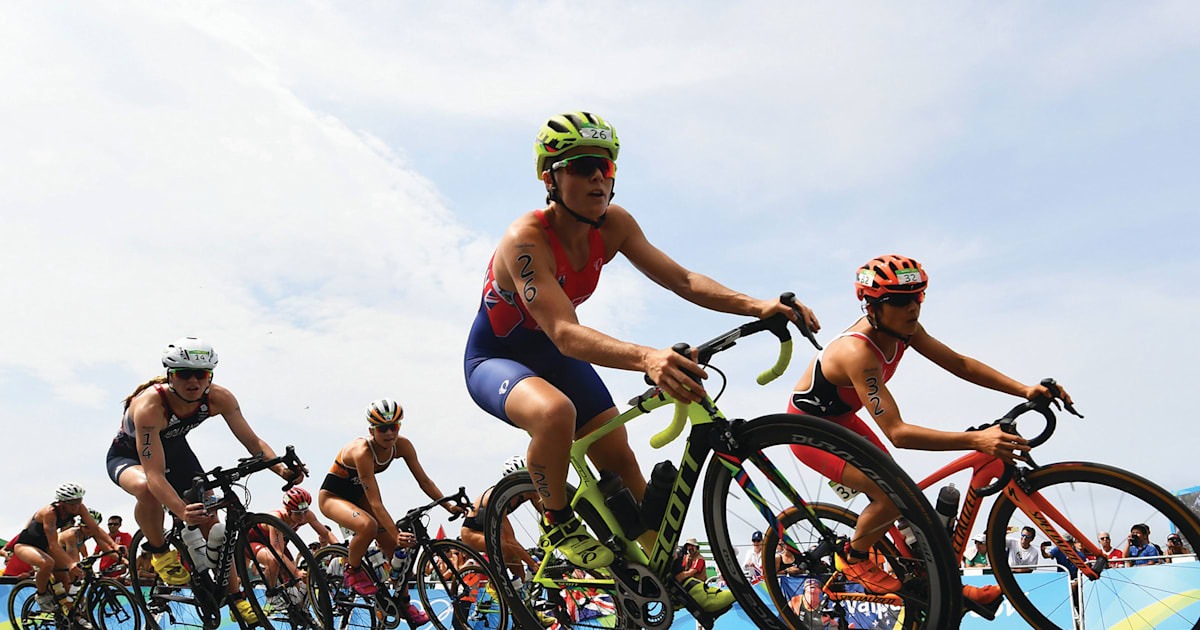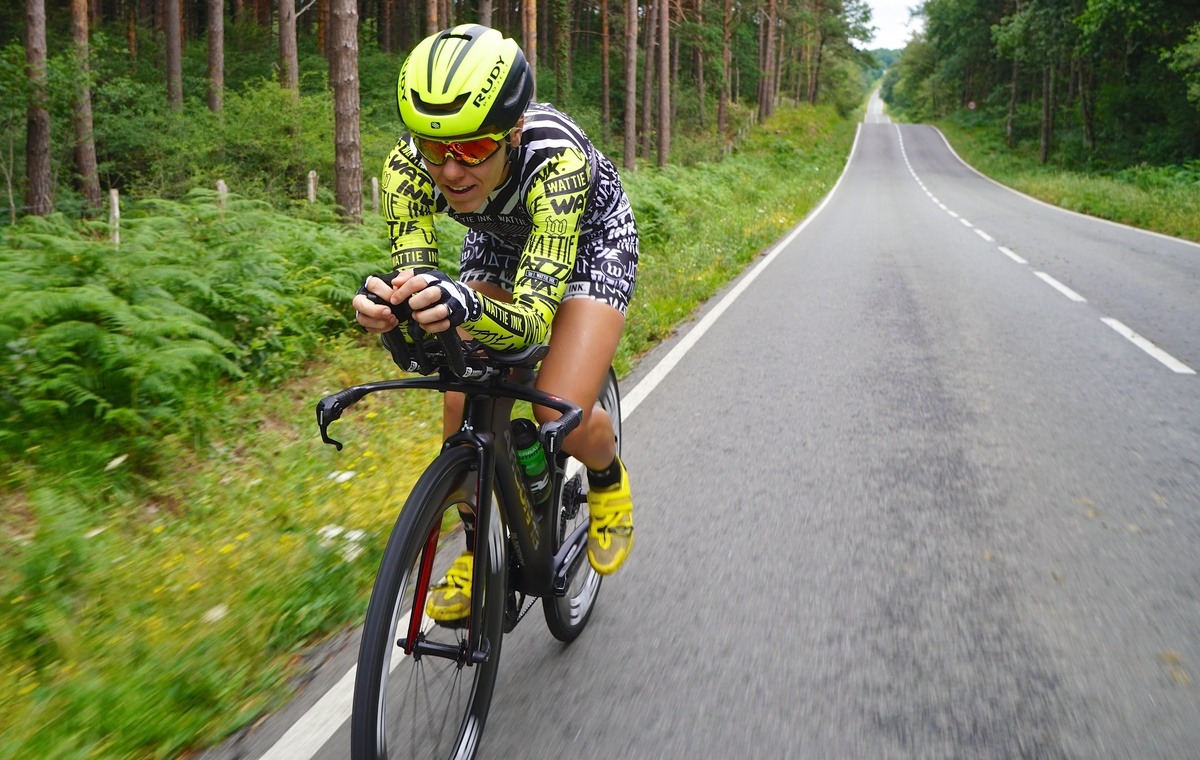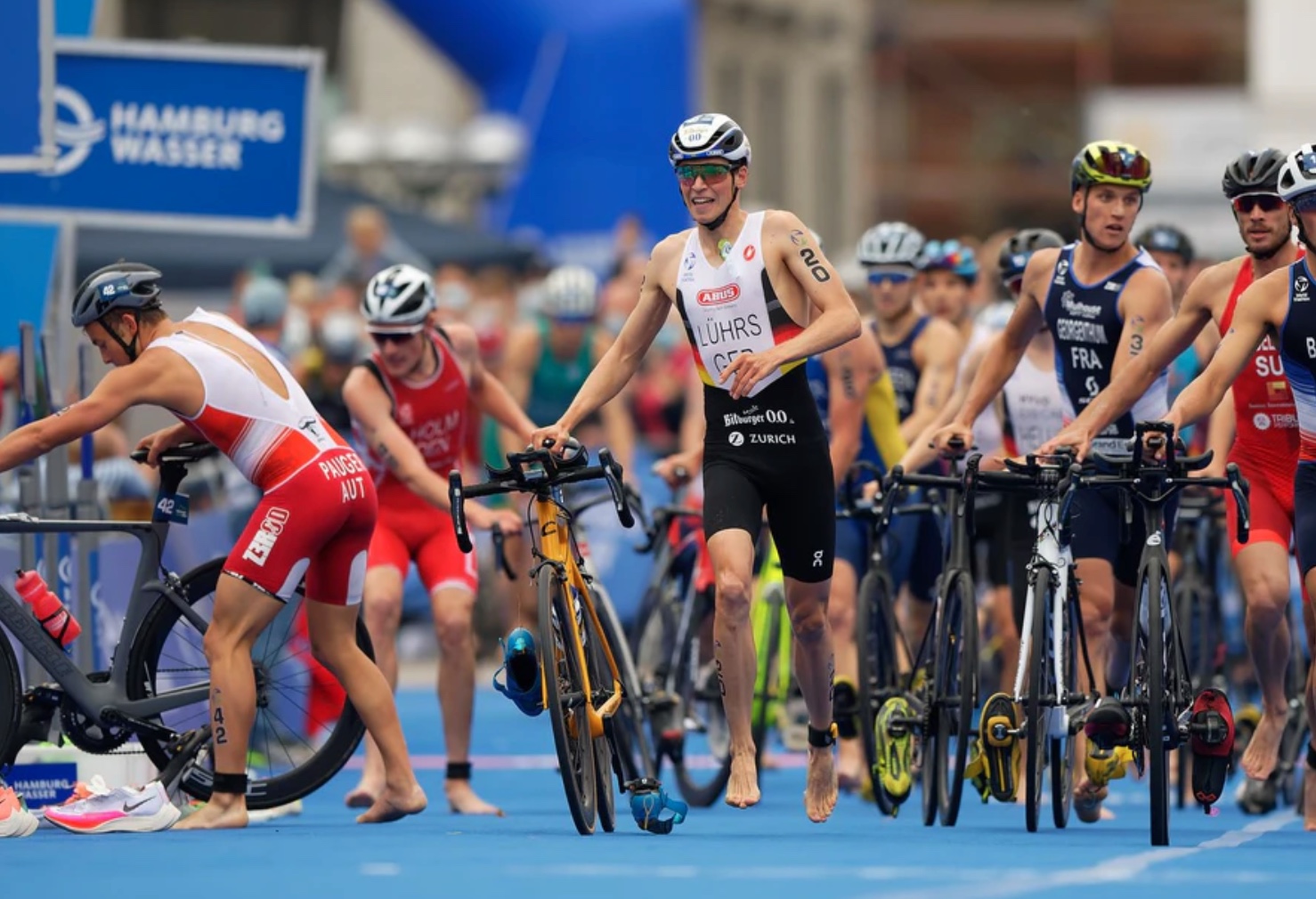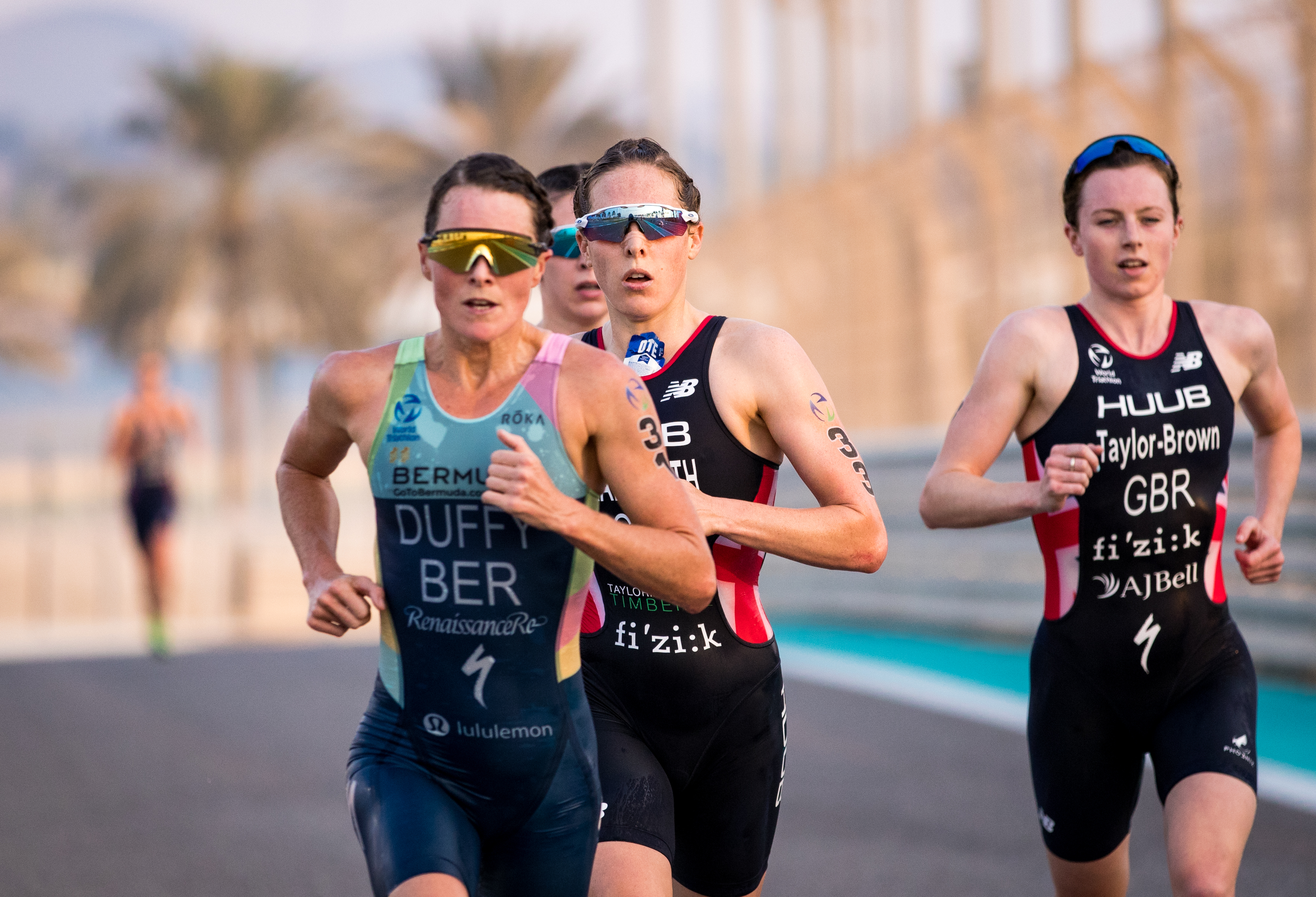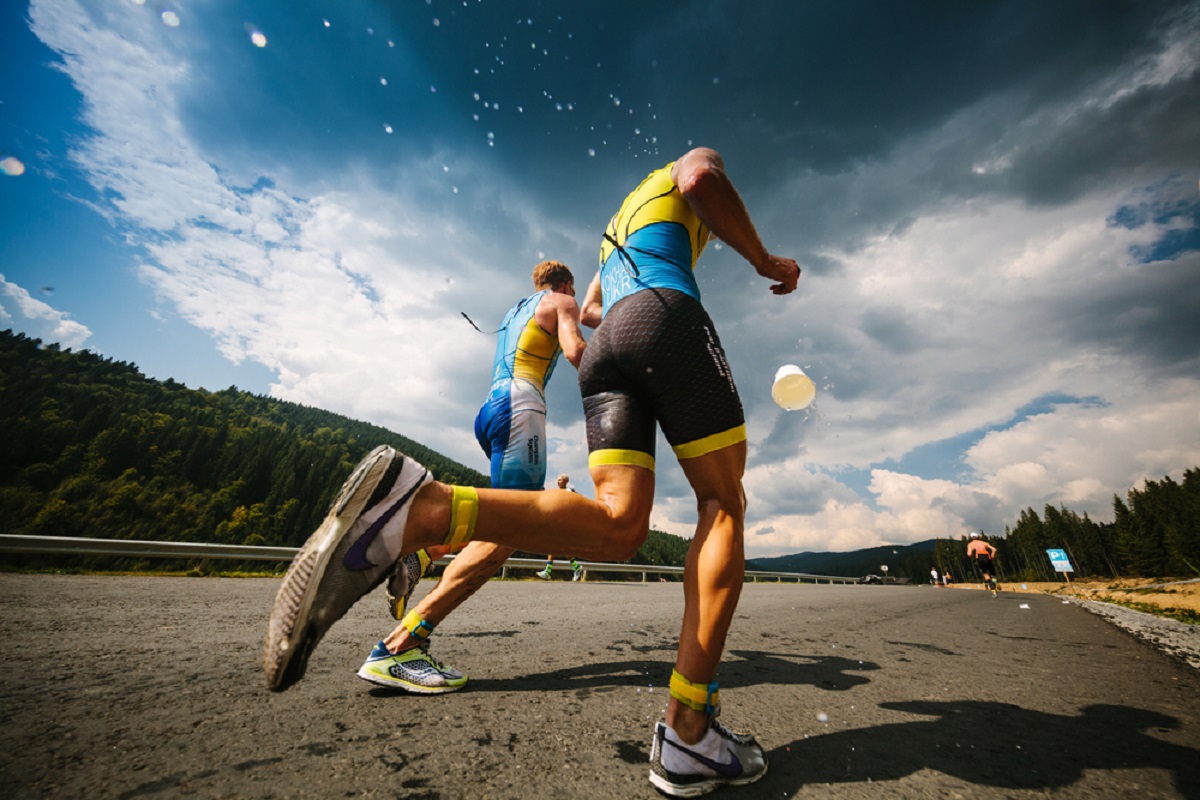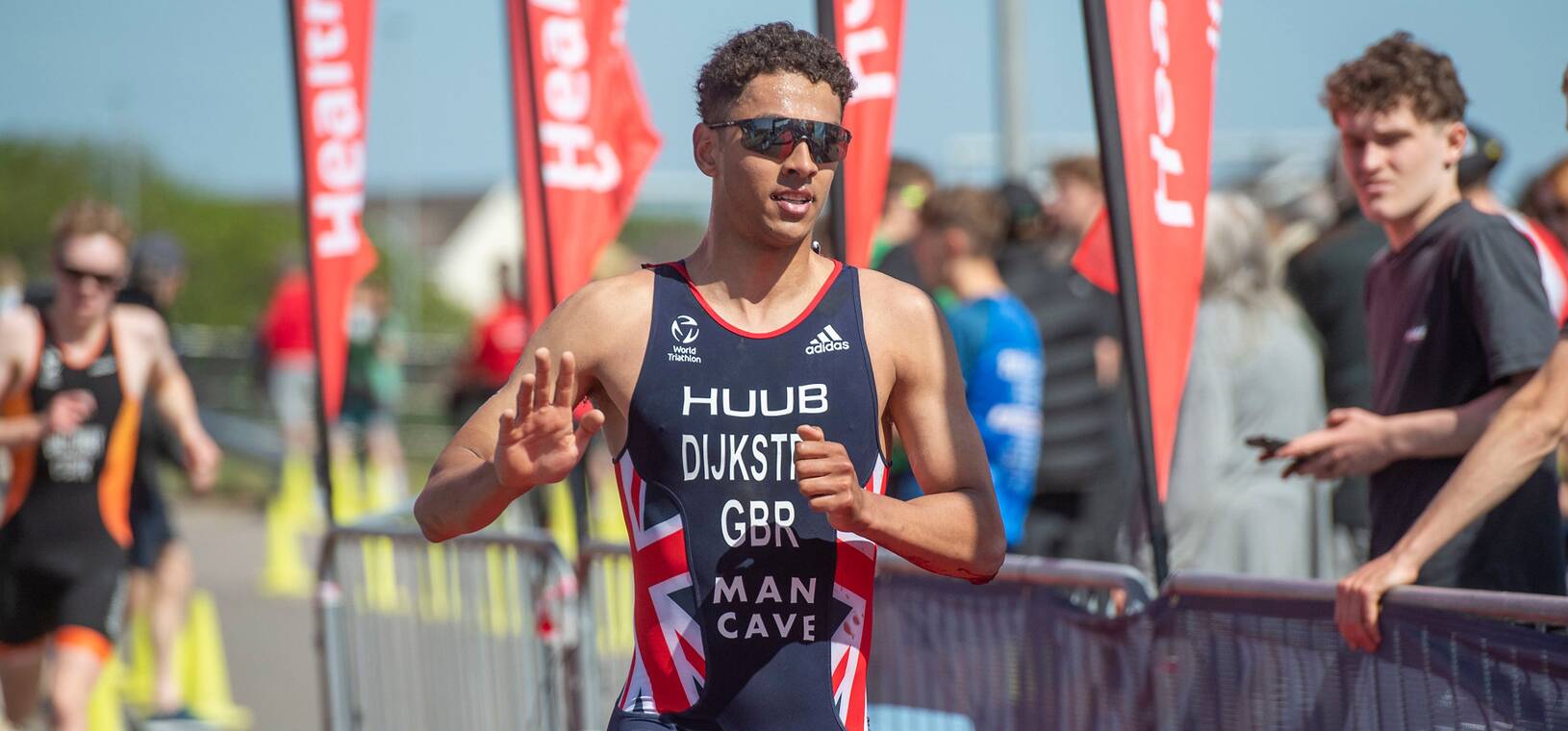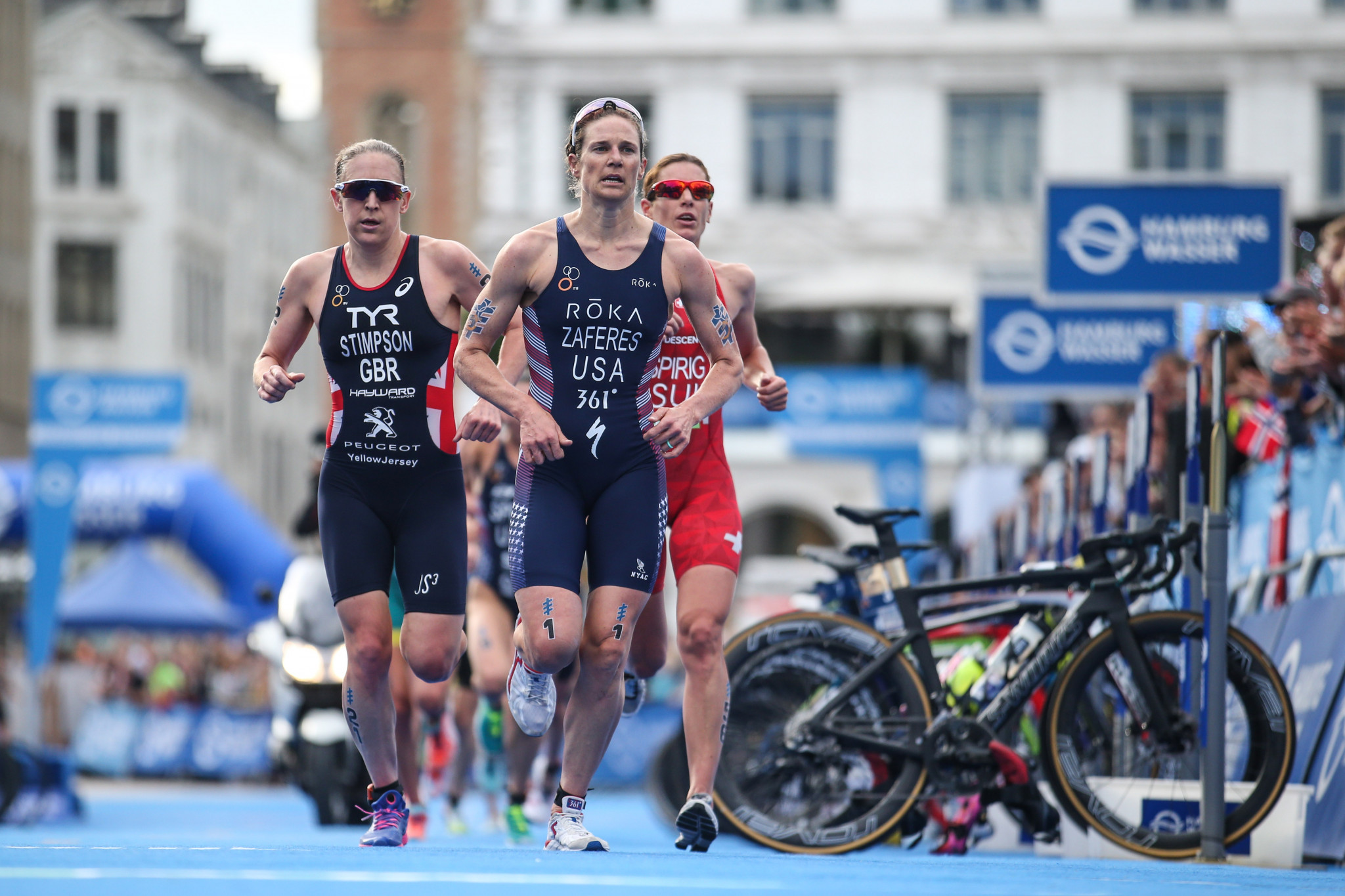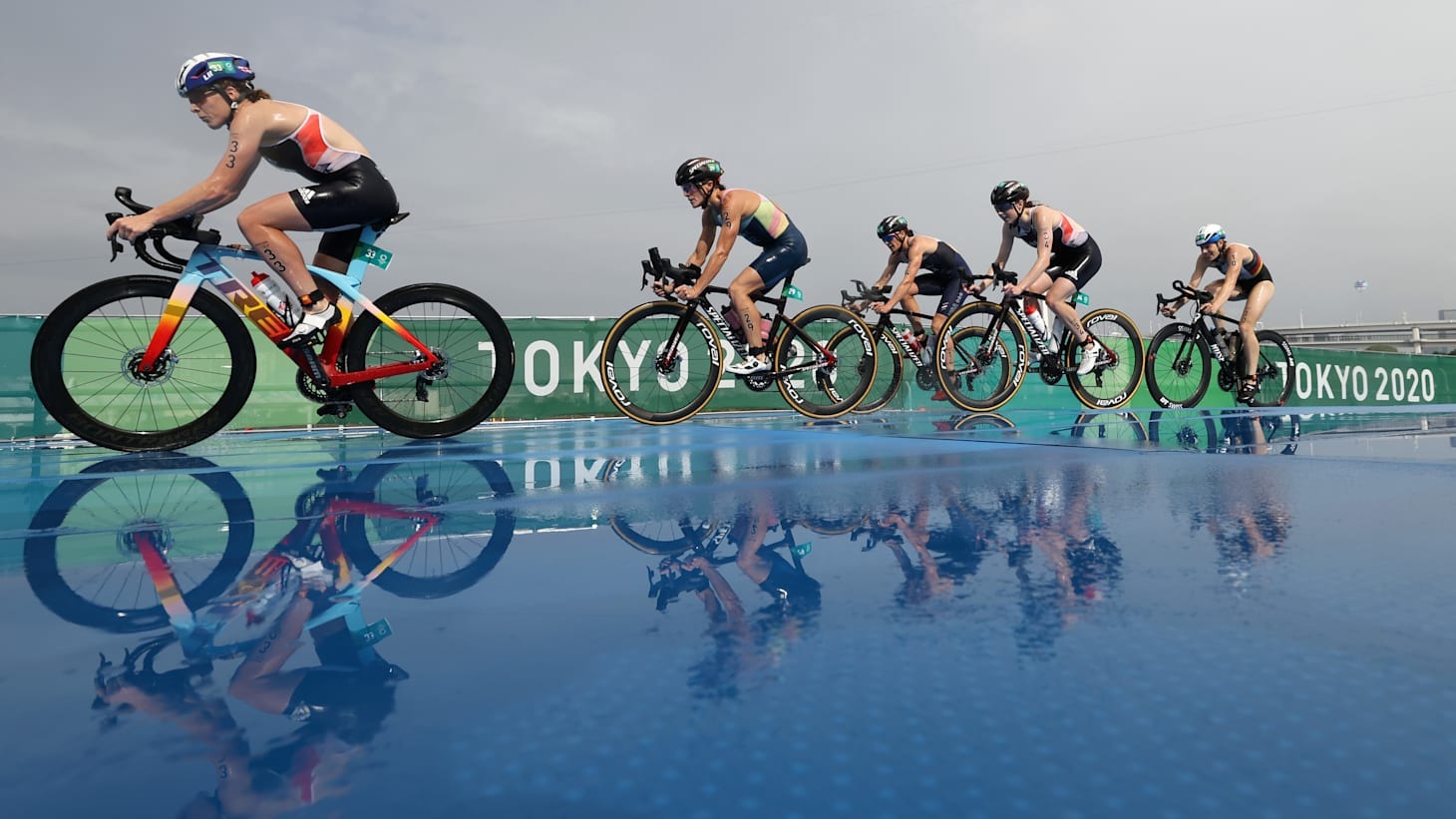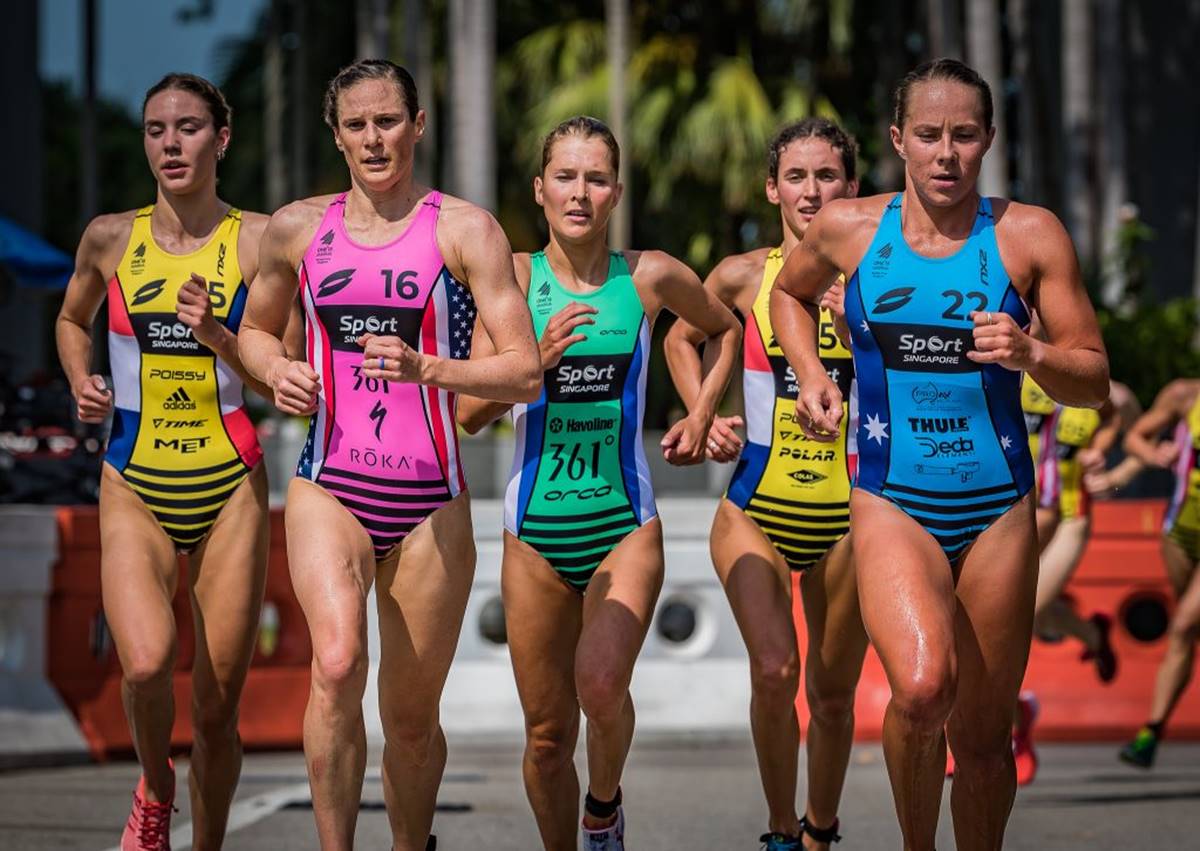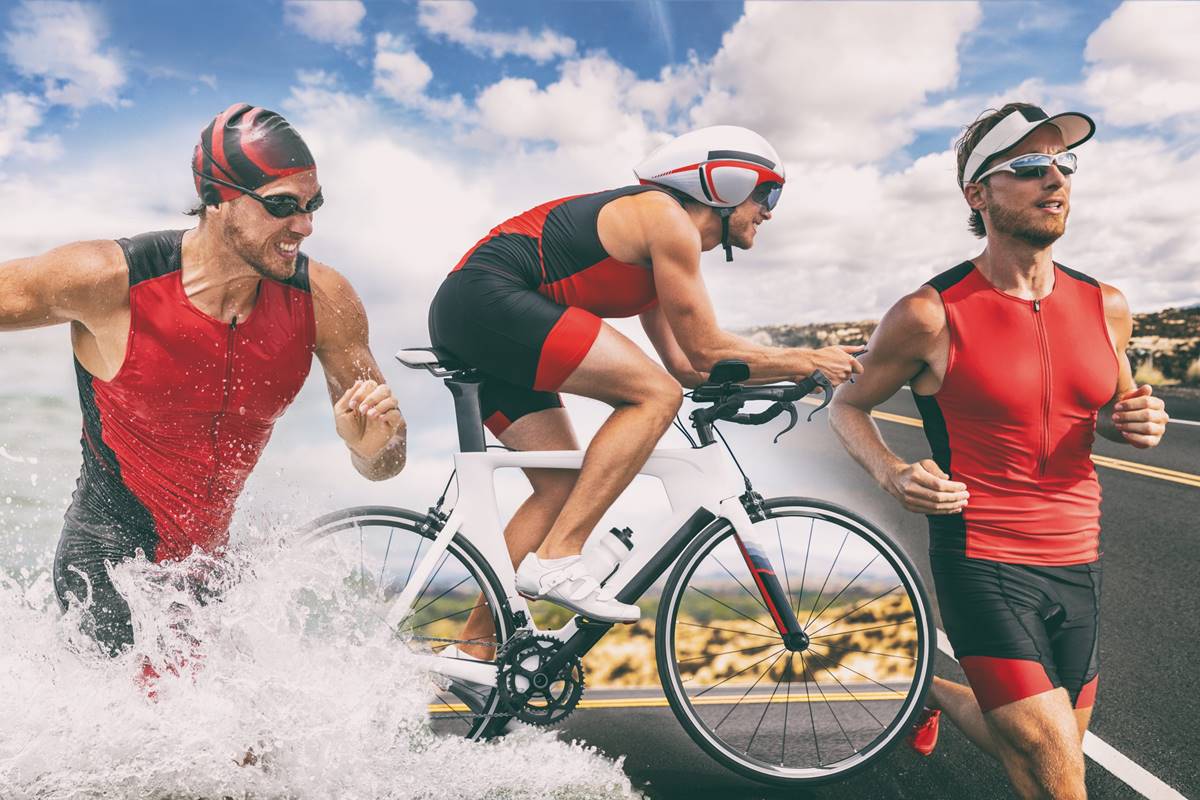Home>Misc>Featured>How Many Gels To Take In An Olympic Triathlon
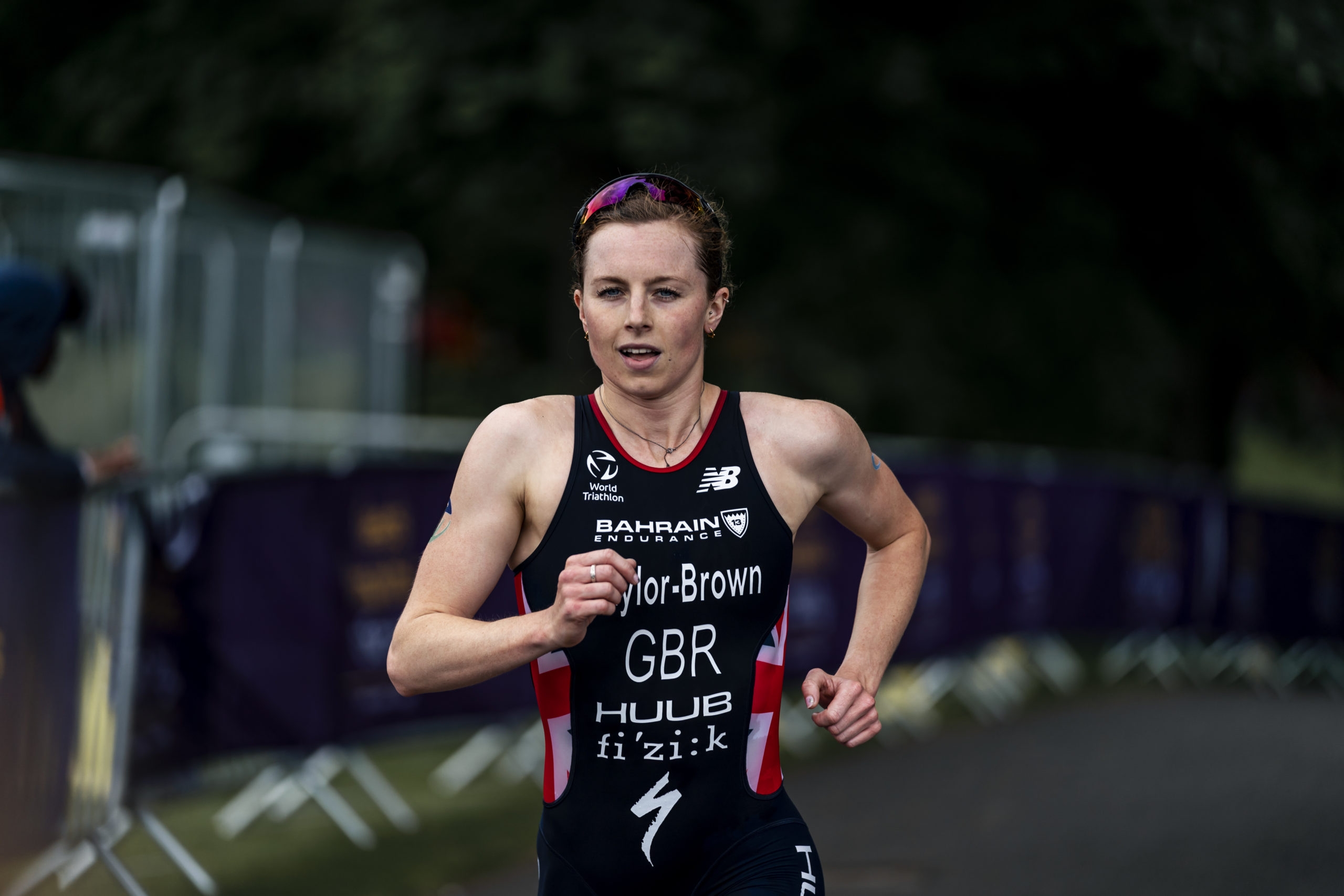

Featured
How Many Gels To Take In An Olympic Triathlon
Modified: January 2, 2024
Discover how many gels to take in an Olympic triathlon featured in this comprehensive guide. Maximize your performance and fuel your race effectively.
Introduction
Welcome to the world of Olympic triathlons, a challenging and exhilarating test of endurance that combines swimming, cycling, and running into one intense event. When it comes to competing in an Olympic triathlon, proper nutrition and fueling strategies are vital for optimal performance. One key element in every triathlete’s fueling arsenal is energy gels.
Gels are concentrated sources of carbohydrates, electrolytes, and sometimes caffeine, designed to provide a quick and easily digestible source of energy during extended periods of physical activity. They have become a popular choice among athletes due to their convenience and effectiveness in replenishing energy stores and enhancing performance.
In this article, we will explore the role of gels in boosting performance during Olympic triathlons, factors to consider when determining gel intake, recommended gel intake guidelines, timing strategies, alternative fueling options, and the importance of preparing and training with gels.
Whether you’re a seasoned triathlete looking to optimize your fueling strategy or a novice preparing for your very first Olympic triathlon, understanding the role of gels and how to incorporate them into your training and race-day plans will help you maximize your performance and achieve your goals.
So, let’s dive in and uncover the secrets of fueling with gels in an Olympic triathlon!
What Are Gels and Why Are They Important?
Energy gels are concentrated, portable packets of carbohydrates, electrolytes, and sometimes caffeine, specifically designed to provide a quick and easily digestible source of energy during endurance activities such as triathlons. They typically come in single-serving pouches, making them convenient to carry and consume on the go.
Carbohydrates are the body’s main source of energy during exercise, and gels are packed with easily digestible carbohydrates like glucose and maltodextrin. These carbohydrates are quickly broken down and absorbed, providing a rapid supply of fuel to working muscles.
Electrolytes such as sodium and potassium are also essential for proper muscle function and hydration. When you sweat during intense exercise, you lose electrolytes which need to be replenished to prevent muscle cramps and maintain fluid balance.
The importance of gels in endurance events like Olympic triathlons cannot be overstated. During these long-distance competitions, the body’s glycogen stores (stored carbohydrates) become depleted, leading to fatigue and a decline in performance. By consuming gels, athletes can replenish their glycogen stores, delay the onset of fatigue, and maintain energy levels throughout the race.
One of the key benefits of gels is their convenience. They are lightweight, easy to carry, and do not require chewing or extensive digestion. This makes them a popular and practical choice for endurance athletes who need a quick and efficient source of energy during their races.
In addition to providing readily available energy, gels can also help prevent bonking, which is a state of sudden and severe fatigue caused by depleted glycogen stores. When the body runs out of glycogen, it can no longer provide fuel to the muscles, resulting in a significant drop in performance. By consuming energy gels at regular intervals, athletes can maintain their glycogen levels and avoid hitting the dreaded wall.
Furthermore, gels can help enhance mental focus and concentration during a race. Some gels contain small amounts of caffeine, which is known to improve alertness and reduce perceived exertion. This can be especially beneficial in the later stages of a triathlon, where mental fatigue can start to set in.
In summary, energy gels play a crucial role in providing fast-acting, easily digestible fuel during endurance events like Olympic triathlons. They help replenish glycogen stores, delay fatigue, maintain energy levels, prevent bonking, and enhance mental focus. These benefits make gels an indispensable part of a triathlete’s fueling strategy.
The Role of Gels in Boosting Performance
Energy gels play a significant role in boosting performance during Olympic triathlons. Here are some key ways in which gels contribute to improved athletic performance:
- Immediate and sustained energy: Gels provide a concentrated source of carbohydrates that can be quickly absorbed into the bloodstream, providing an immediate boost of energy. The carbohydrates in gels are broken down into glucose, which is then used by the body as fuel. The rapid absorption and utilization of glucose help maintain energy levels throughout the race, preventing the athletes from hitting the dreaded wall and experiencing a decline in performance.
- Glycogen replenishment: During an Olympic triathlon, the body’s glycogen stores become depleted, especially during the cycling and running portions. Gels contain high amounts of carbohydrates, which are essential for replenishing glycogen stores. By consuming gels at regular intervals during the race, athletes can ensure that their glycogen levels remain topped up, allowing them to continue performing at their best.
- Muscle preservation: The intense physical demands of a triathlon can lead to muscle breakdown and fatigue. Gels provide a readily available source of energy, reducing the need for the body to break down muscle tissue for fuel. By providing a constant stream of carbohydrates, gels aid in muscle preservation, helping athletes maintain their strength and power throughout the race.
- Electrolyte balance: Gels often contain electrolytes such as sodium and potassium, which are necessary for optimal muscle function and hydration. During an Olympic triathlon, athletes lose electrolytes through sweat. Consuming gels with added electrolytes helps replenish these vital minerals, preventing muscle cramps and optimizing fluid balance.
- Mental focus and alertness: Some gels contain small amounts of caffeine, which is known to enhance mental focus, alertness, and reduce the perception of fatigue. This can be especially beneficial during the later stages of a triathlon, when mental fatigue can set in. The caffeine in gels can help athletes stay sharp, maintain concentration, and push through challenging moments in the race.
Overall, gels have a multi-faceted role in boosting performance during Olympic triathlons. They provide immediate and sustained energy, replenish glycogen stores, preserve muscle mass, maintain electrolyte balance, and enhance mental focus. Incorporating gels into a well-planned fueling strategy can greatly improve performance and help triathletes achieve their race day goals.
Factors to Consider When Determining Gel Intake
Determining the appropriate gel intake for an Olympic triathlon requires consideration of several factors to ensure optimal performance and avoid potential issues. Here are some key factors to consider when determining gel intake:
- Individual energy needs: Every athlete has different energy requirements based on factors such as age, weight, metabolism, and training intensity. It is essential to calculate your individual energy needs to determine how many gels you should consume during the race. Consulting with a sports nutritionist or registered dietitian can help you determine the appropriate energy intake to sustain your performance.
- Race duration: The duration of the triathlon will also influence gel intake. For shorter Olympic distance triathlons, lasting around 2-3 hours, one to two gels may be sufficient. For longer races, such as Ironman or Half Ironman, lasting 4-8+ hours, athletes may need to consume more gels to sustain energy levels throughout the competition.
- Training and experience: Consider your training and experience level when determining gel intake. Experienced athletes who have trained their bodies to efficiently utilize energy sources may require fewer gels compared to novice athletes who may need more supplementation to maintain energy levels. It is important to test gel intake during training sessions to find the right balance that works best for you.
- Tolerance and digestion: Some athletes may have difficulty digesting gels, especially when consumed in large quantities. It is essential to consider your tolerance and digestion when determining gel intake. Experiment with different gel brands, flavors, and consumption patterns during training to identify what works best for your body and digestive system.
- Other fueling sources: Gels should be integrated into a comprehensive fueling plan that includes other carbohydrate sources, fluids, and electrolyte replenishment. Consider the availability of aid stations on the race course and plan your gel intake accordingly. It is important to strike a balance between gels, sports drinks, energy bars, and other sources of fuel to avoid overloading your system or causing stomach discomfort.
- Weather conditions: Weather conditions, including heat and humidity, can impact gel intake. In hot and humid conditions, athletes may need to increase gel intake to account for increased sweating and higher energy expenditure. Staying properly hydrated and adjusting gel consumption based on weather conditions will help ensure optimal performance.
Remember, determining the right gel intake is a personal process that may require some trial and error. It is crucial to listen to your body and make adjustments as needed. Finding the optimal gel intake that suits your individual needs and promotes sustained energy throughout the race will contribute to a successful Olympic triathlon performance.
Recommended Gel Intake for Olympic Triathlons
The recommended gel intake for Olympic triathlons can vary depending on individual factors and race conditions. However, here are some general guidelines to consider when determining your gel intake:
- Pre-race fueling: It’s essential to start the race with adequate glycogen stores. Consume a gel or carbohydrate-rich snack approximately 30-60 minutes before the start of the triathlon to provide a initial boost of energy.
- During the swim: Since consuming gels during the swim is impractical, focus on hydration and maintaining electrolyte levels through sports drinks or water.
- Transition 1 (T1): As you transition from the swim to the bike leg, consider taking a gel or easily digestible carbohydrate source to kick-start your energy reserves.
- Bike leg: For an Olympic triathlon, aim to consume 1-2 gels per hour of cycling. This will provide a steady supply of carbohydrates to fuel your muscles, replenish glycogen stores, and maintain energy levels. Remember to also hydrate and replenish electrolytes with sports drinks or water during this leg.
- Transition 2 (T2): As you transition from the bike to the run, you may consume another gel or carbohydrate source to replenish energy levels and prepare for the final leg of the triathlon.
- Run leg: During the run, continue consuming 1-2 gels per hour to sustain energy levels. Adjust your gel intake based on how you feel and the intensity of the race. Stay hydrated and consider incorporating sports drinks or electrolyte tablets to replenish fluids and maintain electrolyte balance.
The key is to space out your gel consumption evenly throughout the race to maintain a steady supply of energy. Keep in mind that gel intake is just one component of a comprehensive fueling strategy. It is important to also hydrate adequately with water and sports drinks and replenish electrolytes to support optimal performance.
Remember, each athlete is unique, and your gel intake may vary based on your individual energy needs, tolerance, and training level. It is crucial to practice your fueling strategy during training sessions to find what works best for you. Experiment with different brands, flavors, and consumption patterns to optimize your gel intake for race day.
By following these recommended guidelines and tailoring them to your specific needs, you can ensure that your energy levels remain high throughout the Olympic triathlon and maximize your performance to cross the finish line strong and satisfied with your achievement.
Timing Your Gel Consumption
The timing of your gel consumption during an Olympic triathlon is crucial for maintaining energy levels and optimizing performance. Here are some factors to consider when timing your gel consumption:
- Pre-race gel: Consume a gel or easily digestible carbohydrate snack approximately 30-60 minutes before the race start to provide an initial boost of energy. This will help top up your glycogen stores and provide a quick source of fuel for the start of the event.
- During the bike leg: Since the bike leg of an Olympic triathlon is the longest portion, it allows for more opportunities to consume gels. Aim to take your first gel around 30-45 minutes into the bike leg, followed by another gel every 45-60 minutes thereafter. This will provide a steady supply of carbohydrates to fuel your muscles and maintain energy levels throughout the race.
- Transition areas: Take advantage of the transition areas (T1 and T2) to consume gels and prepare for the next leg of the triathlon. This helps ensure that your energy reserves are replenished and ready for the upcoming swim or run.
- During the run: Start consuming gels early in the run leg to avoid hitting a wall later in the race. Aim to take a gel within the first 10-15 minutes of the run, and then continue consuming one gel every 30-45 minutes depending on your energy needs and how you feel. This frequent gel consumption will help sustain your energy levels and prevent a sharp decline in performance.
- Hydration and gel intake: It’s essential to hydrate properly alongside gel consumption. To avoid stomach discomfort, consume small sips of water or sports drinks immediately after taking a gel. Hydration helps with the digestion and absorption of gels and ensures optimal performance.
- Listen to your body: Every athlete is different, so it’s important to listen to your body’s cues during the race. If you feel low on energy or fatigued, consider taking a gel earlier than planned. Conversely, if you feel energized and have consumed enough gels to sustain your performance, you may choose to skip a gel intake. Adjust your timing and gel consumption based on your individual needs and race conditions.
Proper timing of gel consumption is crucial for maintaining a continuous supply of energy and avoiding energy depletion during an Olympic triathlon. Practice your gel intake strategy during training sessions to find the timing that works best for you. Everyone’s digestive system and energy needs are different, so it may take some trial and error to determine the optimal gel timing for your races.
Remember to factor in other fueling options such as sports drinks, water, and energy bars, and adjust your gel consumption based on the availability of aid stations and hydration options on the race course.
By strategically timing your gel consumption throughout the Olympic triathlon, you can ensure sustained energy levels, optimize performance, and achieve your race day goals.
Alternatives to Gels for Fueling during a Triathlon
While energy gels are a popular choice for fueling during a triathlon, they may not suit everyone’s preferences or dietary needs. Fortunately, there are several alternatives to gels that can provide the necessary fuel to sustain your performance. Here are some options to consider:
- Energy bars: Energy bars are a solid alternative to gels. They often contain a mix of carbohydrates, protein, and fats, providing a more balanced source of fuel. Look for bars specifically designed for endurance activities, as they are formulated to be easily digestible during exercise. Remember to consume them with water to aid digestion.
- Fruit: Fruits like bananas, dates, or dried fruit are natural sources of carbohydrates and provide a quick energy boost. They also contain essential vitamins and minerals, making them a healthier option compared to processed gels. Ensure to choose fruits that are easy to digest and don’t cause digestive discomfort during intense exercise.
- Homemade energy snacks: If you prefer to have more control over the ingredients, you can make your own energy snacks at home. Options may include homemade energy balls made from dates, nuts, and additional flavorings like cocoa powder or coconut. These homemade snacks can be customized to suit your taste preferences and dietary needs.
- Sports drinks: Sports drinks are another alternative to gels, as they provide a mix of carbohydrates and electrolytes to fuel and hydrate your body. Look for drinks specifically formulated for endurance activities to ensure they contain the necessary electrolytes and are easily digestible.
- Chews or gummies: Energy chews or gummies are bite-sized, easy-to-eat options that provide a concentrated source of carbohydrates. They often have a similar consistency to candy and can be consumed in small quantities as needed during the race. Like gels and energy bars, chews should be consumed with water to aid digestion.
- Liquid nutrition: Some athletes prefer to rely on liquid nutrition options like homemade smoothies or commercially available liquid meal replacements. These provide a convenient way to consume a balanced mix of carbohydrates, protein, and fats in a drinkable form during the race.
It’s important to remember that each athlete is unique, and finding the right alternative to gels may require some experimentation during training. Consider factors such as taste preferences, ease of digestion, portability, availability during the race, and compatibility with your individual dietary needs.
Whatever alternative you choose, it’s crucial to practice incorporating them into your training sessions to ensure they work well for you and do not cause any digestive issues or discomfort during the race.
Ultimately, the goal is to find a fueling option that provides sustained energy, is easily digestible, culturally suitable, and suits your individual needs and preferences. By exploring the alternatives to gels, you can find the perfect fueling strategy to keep you energized and performing at your best during your triathlon.
Preparing and Training with Gels
Proper preparation and training with gels are essential for maximizing their benefits during an Olympic triathlon. Here are some tips to help you incorporate gels into your training and prepare effectively:
- Experiment during training: Training sessions are the perfect opportunity to experiment with different gel brands, flavors, and consumption patterns. Test out various options to find the gels that work best for you in terms of taste, texture, and how they make you feel during exercise.
- Timing practice: Use your training sessions to practice the timing of gel consumption. Test different intervals and amounts to determine what suits your energy needs and digestion. This will help you find the optimal gel timing for race day and ensure you’re consuming enough fuel to sustain your performance.
- Integrate gels into long training sessions: During your longer training sessions, simulate the conditions of the race by using gels as your primary fuel source. This will help your body adapt to digesting and utilizing gels effectively, while also allowing you to gauge how many gels you’ll need to consume for optimal performance.
- Hydration and gel practice: Practice consuming gels with water or sports drinks to simulate race day conditions. Hydration is crucial for proper gel digestion and absorption, so it’s important to practice this aspect as well.
- Consider the course terrain: In addition to gel consumption, take into account the terrain of the race course during your training. If there are challenging climbs or technical sections, adjust your gel intake accordingly to ensure you have enough energy to tackle those parts of the course.
- Develop a fueling plan: Create a detailed fueling plan that includes the amount and timing of gel consumption. This plan should also incorporate hydration strategies and other fuel sources, such as sports drinks or energy bars, to provide a well-rounded approach to nutrition during the race. It’s important to practice this fueling plan during your training to ensure you can execute it smoothly on race day.
- Prepare for race day: As the race approaches, ensure you have enough gels to sustain your energy needs. Familiarize yourself with the specific gels you’ll be using on race day and pack them in an easily accessible place in your transition bag. Being prepared will help reduce stress and allow you to focus on your performance.
Remember, consistency is key when it comes to training with gels. Develop a routine that works for you and stick to it throughout your training period. This will help your body adapt and become more efficient at utilizing gels as a fuel source.
Additionally, be mindful of any personal dietary restrictions or allergies when selecting gels. There are various gel options available that cater to different dietary needs, such as gluten-free, vegan, or specific allergen-free options.
By dedicating time to prepare and train with gels, you’ll be well-equipped to incorporate them into your race day strategy successfully. The familiarity and confidence gained through training will ensure that you can effectively fuel your body with gels and achieve optimal performance during the Olympic triathlon.
Conclusion
Fueling properly during an Olympic triathlon is essential for optimizing performance and achieving your race day goals. Energy gels play a crucial role in providing a quick and easily digestible source of energy to sustain your performance throughout the race. By understanding the benefits of gels, considering factors such as individual energy needs, timing your consumption strategically, and training with gels, you can enhance your overall triathlon experience.
Energy gels provide immediate and sustained energy, replenish glycogen stores, preserve muscle mass, maintain electrolyte balance, and enhance mental focus. Their convenience and effectiveness make them an indispensable component of a triathlete’s fueling strategy.
When determining gel intake, consider factors such as race duration, training level, tolerance, and digestion. It is important to find the right balance between maintaining energy levels and avoiding stomach discomfort. Adjust your gel consumption based on individual needs and race conditions.
Timing your gel consumption is key to maintaining sustained energy throughout the triathlon. Practice timing strategies during training, integrate gels into long training sessions, and develop a fueling plan that includes hydration and other fuel sources.
While gels are a popular choice, there are alternative fueling options such as energy bars, fruits, homemade snacks, sports drinks, chews, and liquid nutrition. Experiment with different options during training to find what works best for you in terms of taste, digestion, and overall performance.
Lastly, don’t forget to prepare and train with gels. Use training sessions to experiment, practice timing, simulate race conditions, and develop a routine that suits your needs. Pack gels accordingly for race day so you can execute your fueling plan smoothly and with confidence.
By incorporating gels into your training and race fueling strategy, you’ll be able to maintain energy levels, improve performance, and cross the finish line of your Olympic triathlon with a sense of accomplishment and satisfaction. So, kick-start your gel-powered journey today and fuel your way to triathlon success!
